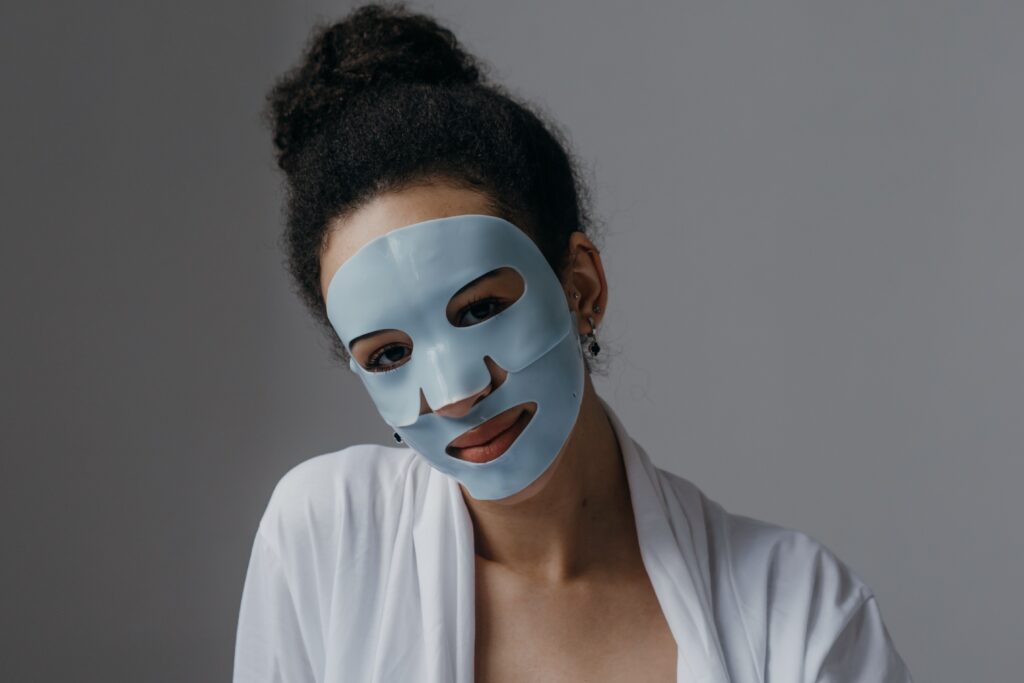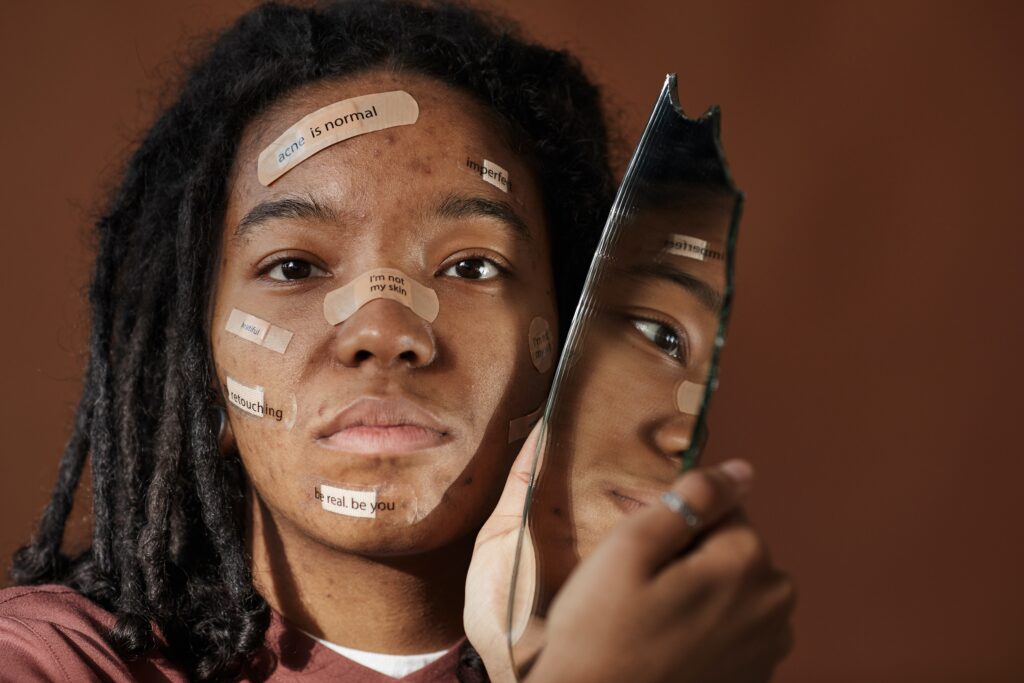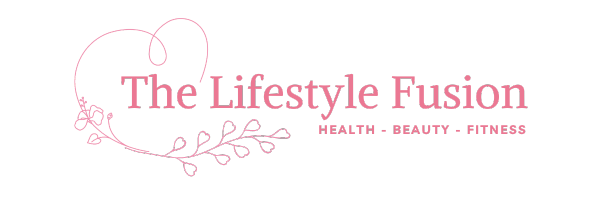Introduction:
Start with the best skincare routine for acne-prone skin that helps gentle cleansers remove impurities without stripping natural oils, followed by non-comedogenic products to hydrate and treat blemishes.
Acne is the most common skin problem that’s not just for teenagers but also adult women and men are affected by acne. According to a report, about 80-90% of teens and around 54% of adult women/men are going through such skin disease. Additionally, it reported skin acne-prone and breakouts and too. Anyhow, we will discuss the best skincare routine for acne-prone skin in this article. Let’s begin!
Acne-prone skin is identified by the presence of acne, which includes pimples, whiteheads, blackheads, and sometimes cysts or nodules. This skin type usually experiences an overproduction of sebum, an oily substance that can clog pores, causing the formation of these blemishes. Acne can be caused by numerous factors, including hormonal fluctuations, genetics, and environmental influences.
Medically, if your acne gets worse during certain phases, then you most likely have acne-prone skin. Acne-prone is called acne vulgaris and is thought to be a long-term, chronic skin condition. So it’s essential to get medical treatment but with a consistent approach, as it may take a long frame of time to overcome.
Best Skincare Routine For Acne-prone Skin

The best skincare routine for acne-prone skin involves several steps and products that target acne while maintaining the overall health of your skin. There’s a skincare routine based on different time schedules and a set of comprehensive steps to follow including:
– Morning Routine
To cure acne-prone skin, start your day by following the steps mentioned below:
Step 1. Cleanser
Start your day with a gentle, sulfate-free cleanser to remove any oils or impurities that may have accumulated overnight.
Step 2. Toner
Apply a non-alcoholic, alcohol-free toner to balance the skin’s pH levels and prep your skin for the next steps.
Step 3. Moisturizer
Use a lightweight, oil-free, or gel-based moisturizer to keep your skin hydrated without clogging pores.
Step 4. Serum
Consider a homemade serum or any serum with ingredients like niacinamide, which can help with redness and inflammation. Vitamin C serums can also assist in fading acne scars.
Step 5. Sunscreen
Apply a broad-spectrum sunscreen with at least SPF 30. Look for a product labeled “non-comedogenic” to prevent clogged pores. Sunscreen is crucial, especially if you’re using acne treatments, as they can make your skin more sensitive to the sun.
Step 6. Acne Treatment
If your dermatologist has prescribed a topical acne treatment, apply it after the toner. Common acne treatments include benzoyl peroxide or salicylic acid. If you’re using over-the-counter products, follow the instructions carefully.
– Evening Routine
By continuing your skincare routine in the evening, perform all the steps as included:
Step 1. Double Cleansing
If you wear makeup, use an oil-based cleanser first to remove makeup, followed by a gentle, water-based cleanser to cleanse the skin.
Step 2. Toner
As in the morning routine, apply a toner to balance the skin’s pH levels.
Step 3. Moisturizer
Apply a hydrating, non-comedogenic moisturizer to lock in moisture.
Step 4. Serum
Consider using a serum with ingredients like retinol, which can help with acne and acne scars. Be cautious, as retinol can dry, so start with a lower concentration and gradually increase it.
Step 5. Acne Treatment
If you’re using prescription acne medications or over-the-counter treatments, apply them at this point. Allow them to absorb for a few minutes before moving on to the next step.
Step 6. Spot Treatment
If you have active pimples, use a spot treatment with benzoyl peroxide or salicylic acid directly on the affected areas.
– Weekly or Biweekly

To attain the desired skincare results, follow the best skincare routine for acne-prone skin with all these steps constantly as given below:
Step 1. Exfoliation
Exfoliate 1-3 times a week with a mild exfoliant containing salicylic acid or glycolic acid to remove dead skin cells and prevent clogged pores.
Step 2. Face Mask
Consider using a clay mask or a mask with ingredients like sulfur to help control excess oil and reduce acne.
5 Auxiliary Tips!
There are five more friendly best skincare routine for acne-prone skin to get a successful skin treatment done:
- Maintain a balanced diet with a focus on fruits, vegetables, and whole grains.
- Stay hydrated by drinking plenty of water.
- Change your pillowcases regularly.
- Avoid picking or squeezing pimples, as this can lead to scarring and more breakouts.
- Manage stress through relaxation techniques like meditation and deep breathing.
Hence, it’s so important to introduce new products gradually to avoid overwhelming your skin. If you’re unsure about which products are suitable for your specific skin type, consider consulting a dermatologist for personalized advice and treatment options.
Best Skincare Routine for Acne-Prone Skin: 12 Treatments

The best treatment for acne scars is based on various factors, including the type and severity of the scars, skin type, and individual preferences. There are twelve treatment options for acne scars. Your 1 problem and my 12 solutions for you are right here below:
1. Homecare Products
Using products containing ingredients like niacinamide, hyaluronic acid, and sunscreen can help maintain results and prevent further scarring.
2. Cortisone Creams
These can be used to reduce the inflammation and redness of hypertrophic or keloid scars.
3. Fillers
Dermal fillers, such as hyaluronic acid or collagen, can be injected into depressed scars to temporarily raise them to the level of the surrounding skin.
4. Topical Treatments
These are most effective for mild scarring and include ingredients like retinoids, alpha hydroxy acids (AHAs), and vitamin C. They can help improve the appearance of scars over time.
5. Chemical Peels
Chemical peels involve the application of a chemical solution to the skin, which exfoliates the top layer and stimulates collagen production. This can help reduce the appearance of mild to moderate scars.
6. Dermabrasion
Similar to microdermabrasion but more aggressive, dermabrasion involves a surgical procedure to remove the top layers of skin, and it’s suitable for deeper scars.
7. Micro-dermabrasion
This is a non-invasive procedure that uses tiny exfoliating crystals to remove the top layer of the skin, which can help improve the appearance of superficial scars.
8. Micro-needling
Micro-needling involves the use of a device with tiny needles to create micro-injuries in the skin. This process triggers the body’s natural healing response, promoting collagen production and reducing scar appearance.
9. Laser Therapy
Different types of lasers can be used to resurface the skin, stimulate collagen production, and reduce the appearance of scars. Fractional laser treatments like fractional CO2 and fractional erbium are popular options for acne scars.
10. Surgical Excision
For deep or large scars, surgical excision may be necessary to remove the scar tissue and close the wound with sutures.
11. Silicone Gel Sheeting
Over-the-counter silicone gel sheets can help flatten and soften scars over time.
12. Platelet-Rich Plasma (PRP) Therapy
PRP involves using the patient’s blood plasma, which is rich in growth factors, to stimulate collagen production and improve the skin’s texture.
Conclusion:
In the end, it’s important to note that the effectiveness of these best skincare routine for acne-prone skin can vary from person to person, and multiple treatments may be required. Please consult with a dermatologist or a skincare professional to determine the best treatment plan for your specific acne scars.
They can examine your skin and recommend a combination of treatments if necessary to achieve the best results. Additionally, keep in mind that patience is key, as many of these treatments take time to show noticeable improvement.






